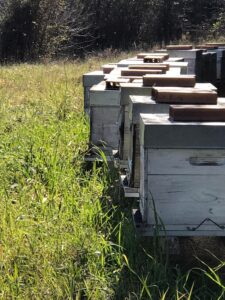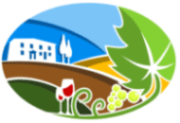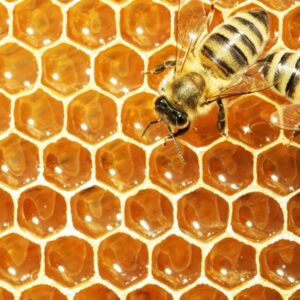Beekeeping in Tuscany
 Of all the projects on our farm at Tenuta Le Mandorlaie, the addition of bees was always one we were looking forward to, we also realised that it is a big responsibility to look after bee families and keep them healthy so they can thrive and be an asset to our environment.
Of all the projects on our farm at Tenuta Le Mandorlaie, the addition of bees was always one we were looking forward to, we also realised that it is a big responsibility to look after bee families and keep them healthy so they can thrive and be an asset to our environment.
In order to start beekeeping in Tuscany we felt that we wanted to have some formal training and luckily throughout Italy there are many beekeeping associations offering training and support to their members. Through these organizations you get to meet as social groups and to have access to mentors who can assist you in your path as a beekeeper.
Arpat – The beekeeping association of Tuscany
We wanted to have the support needed when looking after bees, we talked to the beekeeping association of Tuscany, they regularly organise training classes, so we signed up and are currently beekeepers in training. The training course includes online training session with an instructor and also practical lessons in the apiary.
With so much to learn we started researching online and downloaded what we could regarding bees, now it was getting interesting.
What will we learn on our Arpat beekeeping in Tuscany course
Presentation of the course and the association. All about the base arpat beekeeping course and the association, its support network for beekeepers.
- Bee biology. All about the bee, types of bee, bee structures, dances, how they communicate, how they form families. Bees pass through four stages of development: egg, larva, pupa, and adult. The length of a bee’s life varies depending on the seasons they emerge, what flowers they gather food from, and whether they are solitary or social.
- Work in the apiary. What do we need, and what do when we visit the bees.
- Beehive products: honey extraction and processing technology.
- Pollination and nectariferous plants.
- Honey quality.
- Regulations for beekeeping.
- The “Enemies” of bees and bee diseases.
- Varroa destructor: biology and control techniques
Top 50 things we have learnt to become a beekeeper in Tuscany
- Beekeeping requires you to have some knowledge, be able to give time and be committed. If you are lacking and of these, then forget about beekeeping.
- Join a local beekeeping club, this will give you the support and assistance you may need
- When buying anything, always check prices on beginner beekeeping kits as most companies offer big savings
- get started with your bees in Spring, it is the best time to begin
- Start with two hives, this will give you the ability to learn the art and science of beekeeping, and to gain the proper amount of experience needed
- Which hive to use, we chose the Dadant Blatt hive (known as the DB hive) as it is the most used in Italy, parts are easily available and are interchangeable
- If your hives are in your garden, minimize any issues by building a tall fence or hedge that forces your bees to fly above your neighbors gardens
- Your hives should be placed in early morning sun as this gets the bees out of their hive earlier in the day to forage
- Never wear black or dark clothing when visiting your beehives, the bees using their ultraviolet vision will see you as an interesting flower and will be more attracted to you!
- Bee’s need water, the source of clean water should be near your hives.
- Wear a baseball cap or scarf tied over the top of your head when wearing your bee suit or smock with beekeping protective headgear, its not uncommon for a been to sting through on the top of your bee suit hat, and having another layer will protect a sensitive part of you!
- Always approach your hive from behind, slowly and calmly
- Smoke calms the bees, use a puff before the lid comes off, and then every now and again to keep them calm,its your best friend
- Always carry two lighters incase your smoker goes out, nothing worse than having one lighter and its fails just when you need to relight your smoker.
- Always take a bottle of water of water with you to the hive, for you, and incase your smoker on the grass causes a fire to start
- Carry a roll of packing tape on visits to your hives, great for taping up rips in suits, sealing legs and gloves to arms
- If you get stung, remove the stinger by pinching it out, or scraping out with a credit or debit card (they both work!)
- When you remove a stinger, smoke around the area to remove the sting pheromone which could cause other bees to attack
- Never open your hive if it is below 10degrees
- Don’t leave water feeder in your hive over winter,the bees don’t need it and it will create moisture problems in the hive
- Make each hive individual, paint symbols in paint on each hive, the bees recognize symbols and it will reduce the amount of drift, which is when bees go to the wrong hive
- Use the rule of seven when it comes to adding a new second level for your brood, if 7 frames in the main brood chamber are full, add another level as the bees need the space, important as a way to reduce swarming
- There can only be one queen bee in a hive and when new queens hatch they must kill their competitors, a newly hatched queen will sting her unhatched rivals while they are still in their cells
- Monitor the hive in the swarm time, March to April, make sure that the bees have plenty of space, have growing food reserves, that the queen is laying and is in good health.
- Bee colony decline, absconding and swarming, bee pests and predators, and lack of training are the biggest risks when beekeeping
- The biggest threats to long-term bee survival include Climate change, Habitat loss, Invasive plants and bees, Pathogens, Pesticides
- When splitting a hive to create a new family, the new family needs to be placed at least 3km away
- Don’t worry, you don’t know everything
- Swarming is natural
- Position an empty hive or two nearby in case some of the bees swarm and are looking for a new home
- You can pre-empt swarming by moving the queen and some brood to a new hive, the new hive should then create a new queen, it is important to research this move in order to make is successful
- Keep all your beekeeping equipment clean
- Look at the plants around you, bees need to collect pollen and nectar so see when they flower, and if there are gaps in the year, find the correct bee friendly flowers to add to your garden or land
- Expand the hives when needed,as the brood or honey frames fill up add new space for your bees
- Watch to make sure your stronger hives are not robbing your weaker hives
- Tech minded, then add bee wifi or ioT sensors to monitor parameters such as humidity, weight, temperature
- Location for your hives, sheltered from strong winds, facing south/south east and off the ground
- Keep them as close as practical, the further away your hives are the less you will visit them
- Weigh down the tops of your hives to guard them against blowing off in winter winds
- Harvest your honey but leave enough for the bees for winter
- When you are able to, split colonies and catch swarms for more bees, they all come for free!
- Don’t love them too much, frequent visits lets the heat out, and the cold in and stresses out the bees
- Don’t want to get addicted to bee’s for the rest of your life, then don’t start beekeeping!
Beekeeping Links
Arpat Tuscany Beekeeping association

